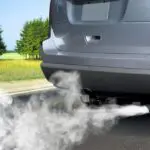There are times when you’d want to go for a long drive, but your car is simply not ready. Or, your car may make clunking noises after a long trip during rush hour to get to work the next day.
This is because your car’s engine has been seized!
So, how to fix a seized engine? To repair it, take out the spark plugs and bathe the cylinders in oil for a few days. You might try starting the engine with a breaker bar once they’ve been lubricated.
TABLE OF CONTENTS
What Does A Seized Engine Mean?
A seized engine means when your car does not turn over. Your electronics may work as it is, but your engine does not start, and the car doesn’t move.
Instead, it starts making clunking sounds when you try to start the engine. There can be many causes of a seized engine, but the main issue is the lack of lubrication.
The piston is lubricated by oil, which permits it to move freely within the cylinders.
Otherwise, metals would scrape against one other, generating a tremendous amount of heat. This causes an engine to seize.
4 Signs Of A Seized Car Engine
A seized car engine can sometimes be confused with a dead battery. Thus, you must see in your car if the below symptoms are prevalent.
1. Loud Cranking Sounds From The Engine
Insufficient lubrication would cause the starter to hit the flywheel. This would result in an irritating sound from the engine.
2. Check If The Piston Is Visible
While inspecting the engine, you may notice the loose components lodging on different engine parts because of which the piston would be visible.
3. Appearance Of Smoke Or Fumes
Because the engine cannot turn over and there is no lubrication, friction between the parts will occur. Friction can produce fumes, smoke, and even fire.
4. No Movement Of The Car
Every time your car refuses to start or turn over, it indicates a seized engine, and we recommend you immediately check the oil level or call a mechanic for servicing.
Is It Healthy To Wait For Symptoms?
It’s very unlike for an engine to seize without warning. There must have been signals from days that you missed or ignored.
There are usually always warning indications that suggest probable seizing or failure, such as knocking noises, poor engine performance, oil light being illuminated, and so on.
But most importantly, failure of the engine is a consequence of low maintenance, notably a lack of oil in your engine.
Although there is some dispute concerning the usage of synthetic oil against traditional oils, you should check your mechanic about the best advice for your car.
How To Fix A Seized Engine Caused By Rusting
Engine seizing can occur due to improper maintenance such as low or inadequate engine oil, which, in turn, causes increased friction between the moving components and overheating.
These issues can stop your car in the middle of a journey, and it takes a professional mechanic to fix. However, engines that have seized due to rust on the cylinder walls can be fixed at home.
The lubricant that adheres to the cylinder walls when the engine is in motion is drained downwards by the force of gravity, leaving the metal surfaces exposed without any protection film.
This results in loss of lubrication.
When you switch off the engine, one or more of the intake valves might remain open. This allows humid atmospheric air to enter the engine through the air intake.
This moist air leaves traces of moisture on the cylinder head, walls, rings, and piston surface due to condensation.
Lack of maintenance allows the condensed air to cause rusting, which can eventually freeze the piston. Thus, the engine gets seized.
If your case appears similar, the following are the tips and tools to fix a seized engine.
Tools And Materials To Fix Seized Car Engine
Tools Required
- Combination wrench set
- Breaker bar
- Screwdrivers (Both standard and Phillips)
- One socket set
Materials Required
- A gasket sealant
- A pen and masking tape
- A penetrating oil
- A few replacement gaskets
5 Steps To Fix A Seized Car Engine
1. Disconnect All The Fittings
Most of the parts outside the engine assembly are driven by the crankshaft. Disassemble all the accessories that are belt-driven and the under-hood parts.
These parts, namely the power steering and water pump, and alternator, make the crankshaft drag.
The power required to eject the piston to turn the crankshaft can be reduced by disconnecting the mentioned parts.
2. Equalize Pressure Throughout The Engine
First, remove the spark plugs with the help of a socket.
Simultaneously mark numbers on the wires you are disconnecting so that you don’t lose the way while reconnecting each wire to its unique cylinder.
As you work to free the piston, they might release pressure against you. Removing the plugs helps in releasing this pressure.
3. Remove The Cover From The Valves
With the help of a wrench, you will need to loosen all the restraining bolts that hold the cover of the valve on each cylinder.
Once you remove the cover, you will be able to see the rocker arms. Dismantle the rocker arms by detaching each nut holding them.
Now forcefully pull out the exposed rods from the cylinder head. This way, you can overcome the resistance and turn the crankshaft by hand.
4. Turn The Crankshaft
Find the front side of the engine assembly. The front side of any transverse engine will be located on either of the sides. At this site, you will see a pulley-driven belt or disk-like harmonic balancer.
For both of these parts, you will find a bolt head at the center.
Fit a socket onto a long-handled breaker bar and attach it to the center bolt. Free the engine by turning this bolt in a clockwise direction.
If you find it difficult to turn the engine, use the spark plug assembly to apply some penetrating oil to the walls of the cylinders.
Let the engine undisturbed for a few hours so that the parts can come out quickly.
Several applications may be required for this process to show results.
If your vehicle has a standard transmission, use stick shifts to change gear and move the car to and fro and use the thrust to turn the engine.
5. Reassemble All The Parts
Now that your engine is free and lubricated reassemble all the parts carefully. Charge the battery and try to start your engine again.
Even after this process, if the engine doesn’t get on, the damage must be beyond mere cylinder rust. At this point, you must take your vehicle to its service center and save it!
Check this helpful video below:
What Causes An Engine To Seize?
Before making any decisions, you must have an idea about what exactly causes your engine such damage.
You can consider three unfussy reasons – the long period of rest, a lack of lubricating oil, or a lack of circulation.
And if, unfortunately, the problem is not just the oil, it can be a hydro lock and a vapor lock. Ever heard of these terms before? Sit back and relax; I got you.
1. Lack Of Oil
You must have understood that lack of oil is one basic reason that makes the engine seize.
Oil or lubricant allows the cylinder walls and piston to move buttery smooth. The lack of oil increases the friction and thus makes the engine excessive hot.
That thin layer of lubricant avoids wear and tear of the piston and cylinder walls against each other. Recall your wintery mornings; you rub your hands together to keep your hands warm.
Yes, that’s friction doing its magic. But here, in the case of the car engine, we don’t need any of these problems acting up.
Scraping of the parts eventually damages the crank journals, the main caps, ends of the rod, and all the items that your engine runs on.
If this problem persists, you will have to pay expensive repair bills!
But if you take care and change engine oil regularly, you will never have to face any of these nightmares.
Symptoms indicating a change of oil are burning oil smell, overheating the engine, fluctuation of oil-pressure indicator, knocking sounds while starting the engine, car’s drop in overall performance, etc.
2. Lack Of Circulation
Proper oil and its circulation are crucial for an engine to work efficiently without causing any future damage.
Now, after reading all the tips, you are consistent with changing engine oil. But imagine what if this oil is not circulating in the first place?
Here I am referring to the heart of the engine, i.e., the oil pump, which pumps the oil to all parts of the engine from the gas tank. If, for some reason, it is unable to do so, your car engine may seize.
Signs of a failed oil pump include a rise in engine temperature, tapping sounds from the engine, oil pressure indicator, etc.
To avoid this, you must actively look for signs of a failing oil pump and get its checkup done before it gets too late. Otherwise, it may cause you a loss of $300 to $3000 or even more.
Replace the engine oil and oil filter regularly. Dirt, dust, and other unwanted material may hinder the working of your car engine.
3. Lack Of Use
What happens when you sit for too long? You feel stiff and uneasy to get up; your back hurts. Similarly, your car engine will get stiff and uneasy if kept at rest for an extended period.
Technically, it will rust and get seized. As we have read earlier, due to rust inside the cylinder, the piston ring gets stuck and cannot move.
How do you identify if your car engine is seized due to lack of use? Working interiors, i.e., lights and the key in the ignition, turns but don’t crank; there is a high possibility that your engine is locked up.
Another reason might be an electrical short, which can be caused while turning the engine on. If you notice smoke rising from the front part of your car as you turn the key, your engine is seized.
You can avoid this problem in the first place by turning your engine on every month or at your convenience.
To be on the safer side, always check for leakages that could cause a lack of oil and eventually a seized engine again!
4. Hydro Lock
If some amount of water that is enough to cause harm enters the cylinder, your engine may need a hydro lock.
This means that all the parts of the engine will stop moving right away. The impact of this damage depends on the speed at which you were going while this happened.
After hydro-lock, your engine is now more vulnerable to rust and damaged cylinders, so get it repaired without a further due.
5. Vapor Lock
Vapor lock is instead an uncommon reason to get your car engine locked. But ignorance might only lead to unnoticed harm.
Your engine gets vapor-locked if the liquid inside gets too hot and gets converted into vapor. It makes your engine encounter gas which it is not familiar with.
If your engine makes an unpleasant sound and loses power, vapor lock is a reason you must consider. It is more common in older cars, mainly if exposed to the sun for a long time.
How To Avoid Seized Engine
The expense to repair a seized engine can empty your pockets. So, it’s better that you prevent its causes from the first day. You must follow the below steps to keep your engine healthy.
- Periodic oiling and oil filter replacements (Here’s the best one).
- Coolant top-ups to keep the engine cool.
- Do not rev the engine too much.
- Timely servicing is essential.
Repair Cost Of A Seized Engine
You can save your money if you can cool down your vapor-locked engine. However, an overheated fuel pump might cost you $500 to $1500 in the cause of replacement.
A hydro lock engine as low as the cost of an oil change. But if your engine gets damaged due to a hydro lock, you may have to replace it, which can cost you thousands of dollars.
For example, treating an infected kidney costs high, but a replacement will cost you higher.
To cut the chase, your seized engine will cost you high, but in the case of a locked-up engine, it will surely be higher.
Difference Between A Seized Engine And Dead Battery
In day-to-day life, whenever the engine stops, people think that the battery might be low. But this is not always the case.
The battery can be drained if you left the headlights on accidentally though out the night or if the door wasn’t closed properly.
By carefully observing the signs and symptoms, you can point out the differences between a dead battery and a seized engine. If the battery is low, none of the car’s parts will start, e.g., lights.
However, if the engine is seized, then the other parts will work properly, but your engine will make a crackling noise and refuse to start.
FAQs
Q1. Is There A Difference Between A Motor And An Engine?
No, engines and motors are used in vehicles are interchangeable.
Q2. Is it Worth It To Replace An Engine?
It certainly depends on the level of damage done to the engine. If your mechanic thinks that a repair will be a good idea and would not cause any problems in the near future, then be it.
However, the damage is beyond repair, and you will have to get the engine replaced.
Q3. How Much Does It Cost To Repair Or Replace An Engine?
A car owner should keep a margin of $2,500 to $4000 to pay for a seized engine. For replacement, approximately 10% to 20% of the original price of their vehicle.
But if you think that the repair cost is greater than buying a new car or relatable, you must not spend the money.
Related Post: How Much Does It Cost To Rebuild An Engine?
Conclusion
You must have evaluated that problems with your engines are the last thing you would like to deal with.
The repair of the engines can easily empty your pockets. In severe cases where your car engine needs replacement is very expensive.
Taking care of your vehicle is essential if you want it on a smooth run for a long time.
Make sure you don’t miss the servicing dates, regular oil changes, keeping the oil filter clean, and making your care move every month or so.
Take your car out for a drive just as you take your pets out for a walk.
Read the owner’s manual carefully and do what’s good while avoiding the bad. Also, make sure that you don’t drive on water-filled roads as your car will get hydro-locked due to entering of water.
You should altogether avoid flooded roads not only to keep your engine safe but also to keep yourself away from danger.




